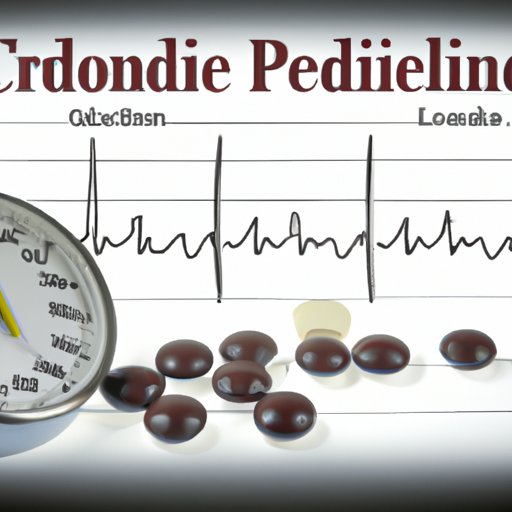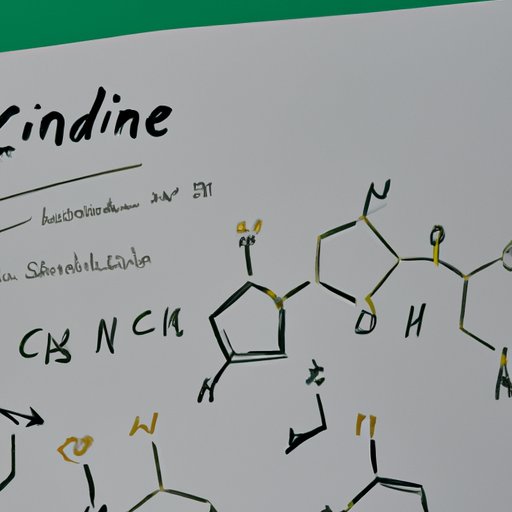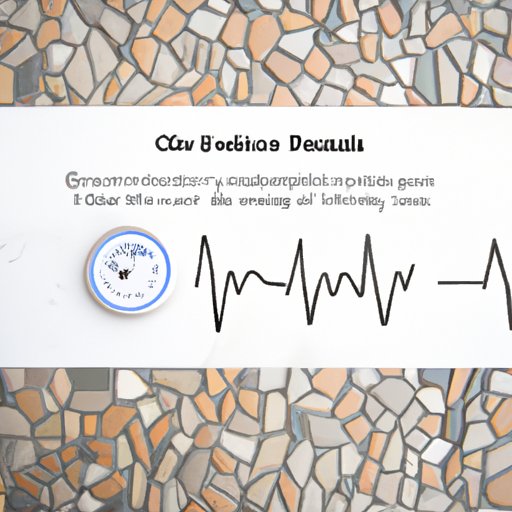
Introduction: Overview of How Clonidine Works in the Body
Clonidine is a medication that is primarily used to treat high blood pressure. It works by affecting the parts of the brain and nervous system that control blood pressure, heart rate, and other functions. Clonidine can also be used to treat attention-deficit/hyperactivity disorder (ADHD) and opioid withdrawal.
The purpose of this article is to explore how clonidine works in the body and how it is used in treating different conditions.

Exploring the Effects of Clonidine on Blood Pressure and Heart Rate
Clonidine works by affecting the parts of the brain and nervous system that regulate blood pressure and heart rate. It helps to reduce blood pressure by relaxing the blood vessels, which allows the blood to flow more freely. It also slows down the heart rate by reducing the amount of adrenaline released by the body.
How Clonidine Affects Blood Pressure
Clonidine can help to lower blood pressure by relaxing the muscles in the walls of the arteries and veins, allowing them to widen. This reduces the resistance to blood flow and lowers the pressure within the vessels. It also helps to reduce the release of hormones, such as renin and aldosterone, which can increase blood pressure.
How Clonidine Affects Heart Rate
Clonidine can also help to slow down the heart rate. It does this by blocking the release of adrenaline from the adrenal glands. Adrenaline is a hormone that causes the heart to beat faster, so reducing its release can help to slow the heart rate down.
Investigating the Uses of Clonidine in Treating ADHD
Clonidine can also be used to treat attention-deficit/hyperactivity disorder (ADHD). ADHD is a condition characterized by difficulty concentrating, hyperactivity, and impulsiveness. It is most commonly seen in children, but can also affect adults.
What Is ADHD?
ADHD is a neurological disorder that affects the parts of the brain responsible for controlling attention and behavior. People with ADHD often have difficulty focusing or paying attention, are easily distracted, and may be overly active or impulsive. Symptoms of ADHD can interfere with daily life, making it difficult for those affected to complete tasks or maintain relationships.
How Clonidine Is Used in Treating ADHD
Clonidine is sometimes used to treat ADHD in both children and adults. It can help to improve focus and reduce hyperactivity and impulsivity. It works by calming the overactive areas of the brain and helping to restore balance. It can also help to reduce anxiety and stress.
Examining the Role of Clonidine in Opioid Withdrawal
Clonidine is also used to treat opioid withdrawal. Opioid withdrawal is a group of symptoms that occur when someone stops taking opioids, such as prescription painkillers or heroin.
What Is Opioid Withdrawal?
Opioid withdrawal is a group of physical and psychological symptoms that can occur when someone suddenly stops taking opioids. Common symptoms include nausea, vomiting, muscle aches, sweating, and insomnia. Severe cases can cause hallucinations, seizures, and even death.
How Clonidine Can Help With Opioid Withdrawal
Clonidine can be used to help manage the symptoms of opioid withdrawal. It works by calming the overactive areas of the brain and reducing anxiety and stress. It can also help to reduce the intensity of the physical symptoms, such as nausea and muscle aches.
Comparing Clonidine to Other Medications Used for Similar Conditions
Clonidine is not the only medication used to treat conditions such as high blood pressure, ADHD, and opioid withdrawal. There are other medications available that may be more effective or have fewer side effects.
Comparing Clonidine to Other Medications Used to Treat ADHD
Other medications used to treat ADHD include stimulants such as Ritalin and Adderall, as well as non-stimulant medications such as Strattera and Intuniv. These medications work differently than clonidine and may be more effective for some people.
Comparing Clonidine to Other Medications Used to Treat Opioid Withdrawal
Other medications used to treat opioid withdrawal include buprenorphine and methadone. These medications act on the same brain receptors as opioids, helping to reduce cravings and withdrawal symptoms. They may be more effective than clonidine for some people.

Understanding the Side Effects of Clonidine
Like all medications, clonidine can cause side effects. Most of these side effects are relatively mild and do not require medical attention. However, some side effects can be serious and should be reported to your doctor right away.
Common Side Effects of Clonidine
Common side effects of clonidine include dry mouth, drowsiness, constipation, dizziness, headache, and fatigue. These side effects usually go away after a few days of taking the medication.
Rare but Serious Side Effects of Clonidine
In rare cases, clonidine can cause serious side effects such as low blood pressure, depression, confusion, fainting, and irregular heartbeat. If you experience any of these side effects, contact your doctor right away.

Investigating How Clonidine Interacts with Other Drugs
Clonidine can interact with certain medications, including blood pressure medications, antidepressants, and sedatives. It is important to tell your doctor about all the medications you are taking so they can monitor for possible drug interactions.
Drug Interactions with Clonidine
Clonidine can interact with certain medications and make them less effective. For example, clonidine can make blood pressure medications less effective. It can also increase the risk of side effects from other medications, such as sedatives and antidepressants.
Monitoring Drug Interactions When Taking Clonidine
Your doctor should monitor for possible drug interactions when you are taking clonidine. They may need to adjust the doses of your medications or suggest alternative treatments. It is important to tell your doctor about all the medications you are taking, including over-the-counter medications, herbal supplements, and vitamins.
Conclusion
Clonidine is a medication that is primarily used to treat high blood pressure. It works by affecting the parts of the brain and nervous system that control blood pressure, heart rate, and other functions. Clonidine can also be used to treat ADHD and opioid withdrawal. It is important to understand the side effects of clonidine and how it interacts with other medications before taking it.
(Note: Is this article not meeting your expectations? Do you have knowledge or insights to share? Unlock new opportunities and expand your reach by joining our authors team. Click Registration to join us and share your expertise with our readers.)
